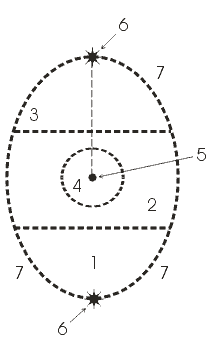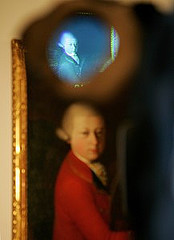The Poet in the Egg

Roberto Assagioli (1888-1974) was the psychologist who developed psychosynthesis, just as, for instance, Sigmund Freud developed psychoanalysis and Carl Jung developed psychodynamics. I have often fallen back on Assagioli while thinking or meditating on the psyche, because of his famous egg, and how inclusive it is of psychic processes.
For further or preparatory reading, and what I will quote from, here is an excellent and fairly brief essay in pdf by Roberto Assagioli: Dynamic Psychology and Psychosynthesis

In the egg diagram, the numbers refer to the following:
1. The Lower Unconscious, containing biological drives and primitive urges, as well as complexes and phobias.
2. The Middle Unconscious, containing what is not in focus, and mental processes not being used, but that are readily accessible.
3. The Higher Unconscious or Super Unconscious, containing the higher aspirations, the heroic, the altruistic, the genius, and so forth.
4. The Field of Consciousness, containing that which one is currently aware of.
5. The conscious self or "I", that which is aware of the Field of Consciousness, and so the center.
6. The Higher Self, that which is unaffected and remains constant. Differentiated from the "I" in that, for instance, the "I" goes away when unconscious, as with some stages of sleep or being knocked out.
7. The Collective Unconscious, which is much like Jung's.
Assagioli points out that there is osmosis taking place from the social environment as one encounter others, a flow from the Collective Unconscious into the individual's egg, but also that this osmosis takes place with all the fields within the egg and out from it.
He also says this:
What has to be achieved is to expand the personal consciousness into that of the Self, to reach up, following the thread or ray . . . to the Star; to unite the lower with the higher Self.
This is an arduous undertaking, yet a "magnificent endeavor." One way to do this, is to strive after an ideal.
For some it may be the ideal of the artist who realizes and expresses himself as the creator of beautiful things, who makes art the most vital interest and the animating principle of his existence, pouring into it all his energies. For others it may be the ideal of the seeker after Truth, the philosopher, the scientist. For yet others it is a more limited and personal ideal, that of the good father or mother.
Assagioli seems to talk about the merging of the higher Self and the personal self as an ideal to be strived for, and I suppose it is, or at least it is a fine thing to experience. It seems to me that once it is attained, a perfectly healthy and natural thing to do, is to revisit and find unexplored places from the journey, to allow separation to take place, such that a breadth of humanity may be experienced. And in the case of the artists, or specifically the poet, important points of view may be explored and brought to bear.
 Wolfgang Amadeus Mozart is known to have compose universally beautiful music. Referring to Assagioli's egg, his personal self, centered in his Middle Unconscious as would be for most people, would be suddenly injected, as if he had a direct line high into the Higher Unconscious.
Wolfgang Amadeus Mozart is known to have compose universally beautiful music. Referring to Assagioli's egg, his personal self, centered in his Middle Unconscious as would be for most people, would be suddenly injected, as if he had a direct line high into the Higher Unconscious. On the other hand, Plato, who produced work after work of consistent genius, might be looked at as if his personal self was not centered within the Middle Unconscious, but located near or on the lower edge of the Higher Unconscious. As a rare human being, that could be where he lived or came from.
Assagioli also talks about the mutability of psychic energies, and how transmutation of these energies can bring about poetry:
When the Latin poet says, "facit indignatio versus" (Indignation produces my poems) he shows that he has realized how an emotional wave of indignation, if denied a natural outlet through external action, can be trans. formed into poetic activity. Again, when Heine writes, "Aus meinen grossen Schmerzen mach' ich die kleinen Lieder' (Out of my great suffering I produce my little songs) he indicates that his pain has been sublimated into poetry, and thus transfigured into beauty.
The poet goes from suffering or indignation to writing poetry, but the non-poet does not. With the mutation, placticity, and osmosis going on in the psyche, it may have to do with these processes causing Mozart-like injections into and around the Middle Unconscious and the Field on Consciousness from anywhere in the egg. By writing poetry, the poet does his or her part "to expand the personal consciousness"--but for readers also, a doubly "magnificent endeavor."
0 Comments:
Post a Comment
<< Home